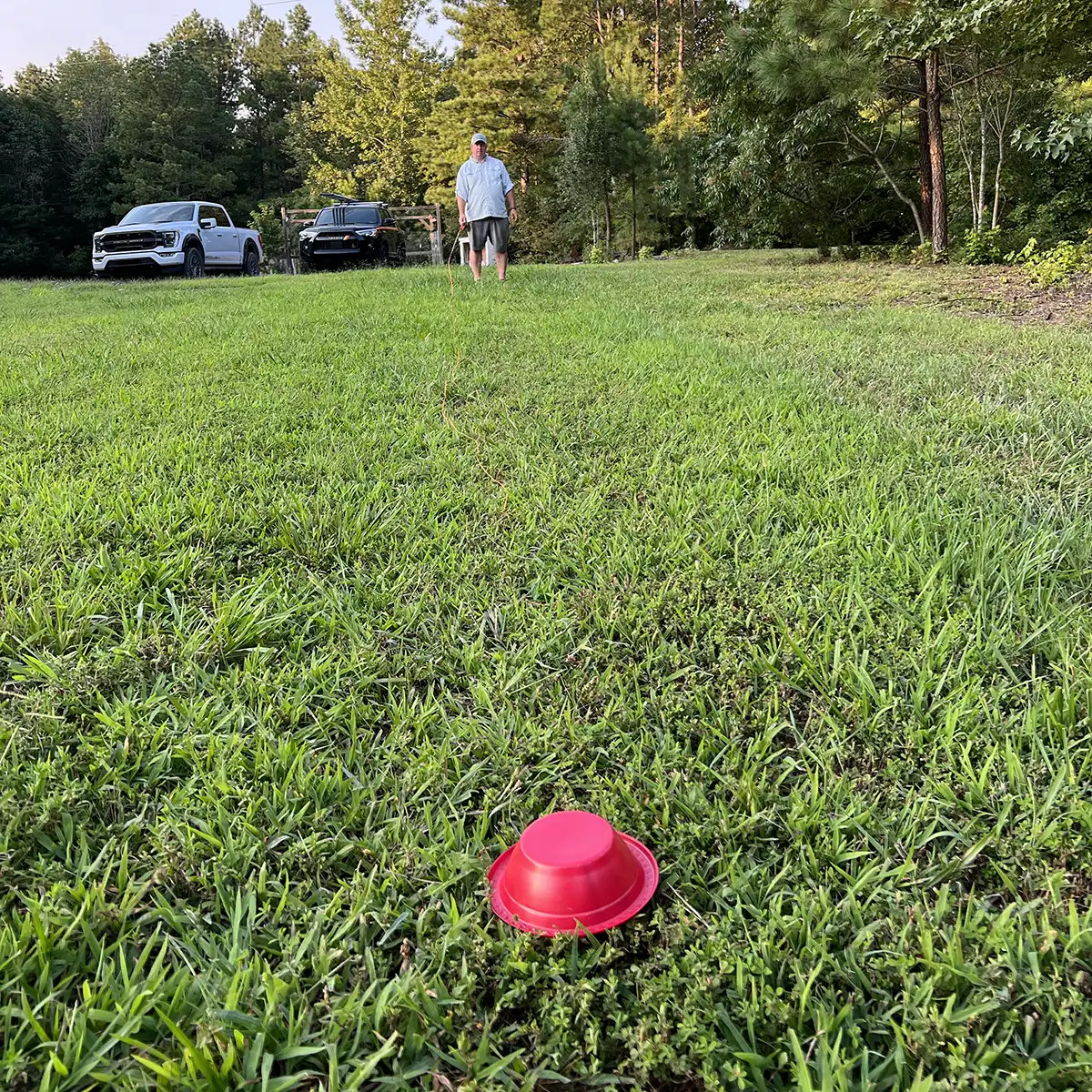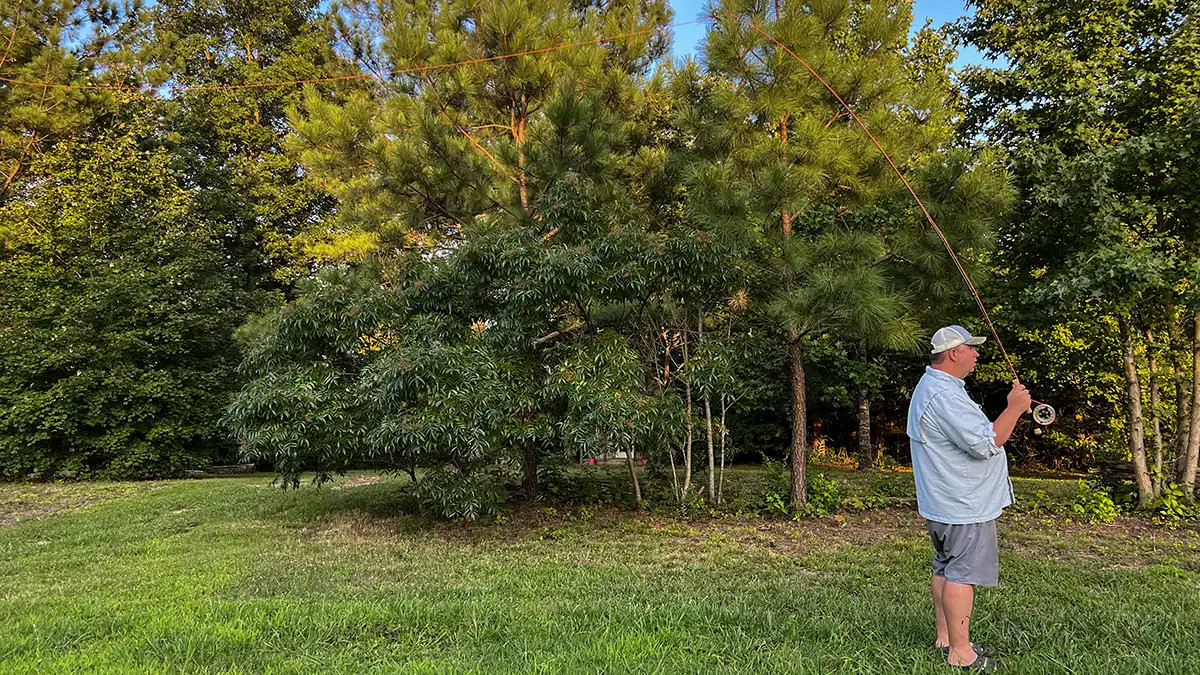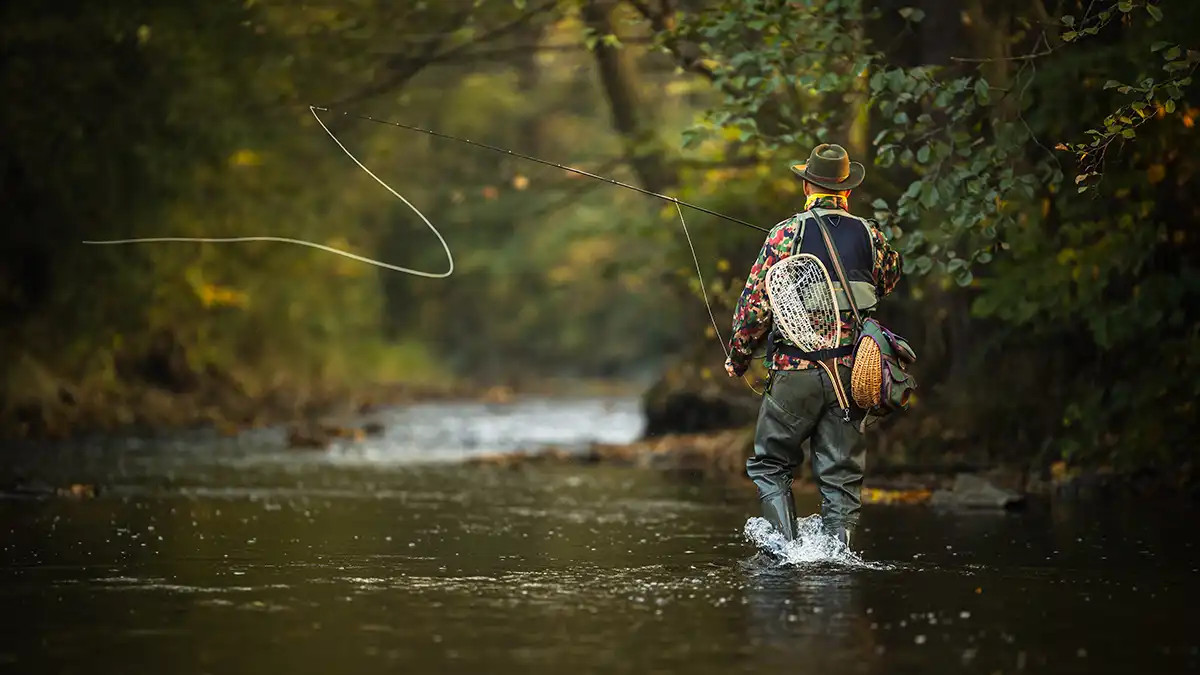Ever watched a fly fishing expert gracefully cast their line, making it dance in the air with precision, and wondered if you could ever achieve that? Many beginners feel intimidated by fly casting, thinking it’s incredibly difficult. However, the truth is, mastering the fly cast is more about understanding the technique than brute force. It’s about timing and the fundamental principles, not some mystical angler’s secret. You might be surprised to find that learning to cast a fly rod is more accessible than you think.
If you’re used to fishing with spinning reels or baitcasters, you’re likely accustomed to casting lures where the weight of the lure propels your cast. Fly fishing is different, and overcoming this ingrained muscle memory is key. The fundamental difference lies in how the line and the fly are delivered. Understanding this distinction is the first step in mastering the fly cast.
So, gather your fly fishing gear – it doesn’t have to be the latest expensive equipment. A basic setup or even an older rod will do just fine to start learning and enjoying fly fishing. Let’s dive into the basics of fly casting and get you started on your fly fishing journey.
Understanding the Difference: Fly Line vs. Lure Casting
In conventional fishing with spinning or baitcasting reels, the weight of the lure is what allows you to cast. You essentially use the rod to throw the lure towards your target. In contrast, fly fishing relies on the weight of the fly line itself to carry the lightweight fly. The fly line is specifically designed to be heavier, and it’s this weight that you manipulate during the cast to deliver the fly accurately. This is why fly anglers often have a significant amount of line in the air during their cast – they are managing the weighted line to position the fly.
A common mistake for beginners is applying too much force, reminiscent of conventional casting. This often leads to overpowering the fly rod and disrupting the delicate balance needed for a good cast. A proper back cast is crucial, often setting up a successful forward cast almost automatically.
Interestingly, casting prowess isn’t about strength. Consider Maxine McCormick, who became a world casting champion at just 14 years old, achieving a 161-foot cast. Fly fishing technique emphasizes finesse over force. Think of it like this: less effort, more finesse, results in a better fly cast.
Now that we’ve debunked the myth of strength in fly casting, let’s explore how to effectively get that fly to your target using proper technique.
 fly rod casting area
fly rod casting area
Setting Up Your Fly Casting Practice Area
To begin practicing, find an open grassy area. A park or large lawn works perfectly. It’s helpful to set up a target to aim for. A hula hoop is ideal, but a plastic plate or even a marker on the ground will work. Start by pulling about 20 feet of fly line out from your rod tip and lay it straight in front of you on the grass.
Crucially, ensure you have ample space both in front of and behind you. This prevents your line from catching on trees, structures, or, most importantly, people. For safety and practice convenience, tie a small piece of bright yarn to the end of your tippet instead of a sharp fly. This simulates the fly’s weight and allows you to practice without the hazard of a hook.
Fly Rod Grip and Stance for Casting
Now, pick up your fly rod. The correct grip is similar to shaking someone’s hand. Your thumb should rest on top of the rod handle, with your fingers wrapped underneath for support. Maintain a firm but relaxed grip – avoid a death grip, as tension hinders smooth casting.
Position your feet shoulder-width apart, slightly angled towards your target. This stance provides balance and allows for comfortable rotation during the cast. While you may eventually find your preferred stance, this is a solid starting point for beginners.
Mastering the Basic Overhead Fly Cast
Among the various fly casts, the Basic Overhead Fly Cast is the most fundamental and recognizable. It’s the iconic image of fly fishing – the line gracefully looping through the air above an angler in a serene river setting.
The Overhead Cast is composed of four key movements:
- The Pickup
- The Back Cast
- The Pause
- The Forward Cast
 cast a fly rod back cast
cast a fly rod back cast
Initiating the Cast: The Pickup. Begin with your rod tip low, near the ground or water surface. This starting position helps maintain line control, especially in fishing situations where minimizing slack is important. To initiate the pickup, smoothly lift your rod tip upwards until it reaches the 10 o’clock position. This upward lift sets the stage for the back cast.
Executing the Back Cast. From the 10 o’clock position, accelerate the rod tip backward towards the 2 o’clock position, making a decisive stop at 2 o’clock. This is described as a quick acceleration to an abrupt stop. Keep your wrist relatively firm, avoiding excessive wrist bending. When you stop the rod tip around the 2 o’clock mark, your thumb will be near your ear, and the fly line will extend out and begin to unroll behind you.
The Crucial Pause. After the back cast, patience is key. Introduce a brief pause, a moment that might feel longer than it actually is. This pause allows the fly line to fully extend and straighten out behind you before you initiate the forward cast. If you rush into the forward cast without this pause, you’ll likely hear a snapping sound – the leader whipping and losing casting efficiency. This “snap” is your cue to lengthen your pause.
The duration of the pause is directly related to the amount of line you have extended. More line requires a longer pause to allow it to fully unroll behind you. With practice, you’ll develop a feel for the correct timing. Avoid pausing so long that the line falls to the ground behind you. Once the line has straightened out behind you, you are ready for the forward cast.
Delivering the Forward Cast. The forward cast mirrors the back cast motion – a quick acceleration to an abrupt stop. Bring the rod tip forward and stop it decisively at the 10 o’clock position again. This action will propel the fly line forward, allowing it to extend and gently land on your target in front of you.
You’ve now completed a basic overhead fly cast and are ready to repeat the process, refining your technique with each cast.
Essential Tips for Mastering Your Fly Cast
- Maintain a Straight Rod Tip Path: Visualize your rod tip moving in a straight line back and forth between the 10 o’clock and 2 o’clock positions. Imagine painting a vertical line in the sky for your rod tip to follow. This consistent path is crucial for controlled casts.
- Start with Less Line: Begin practicing with shorter lengths of fly line. As your comfort and control increase, gradually extend the line length. This progressive approach makes learning smoother.
- Focus on the Stops: The stops at the 10 o’clock and 2 o’clock positions are paramount, especially the back cast stop at 2 o’clock. It’s common, even for experienced anglers, to let the back cast drop too low (stopping closer to 3 or 4 o’clock). This “dropping the back cast” can cause the rod to flex too much and drive the line into the ground behind you.
- Visualize the Stops: Imagine you are in a room with a paintbrush. On the back cast, aim to “splash paint” on the back wall where the ceiling meets the wall (2 o’clock). For the forward cast, aim to “splash paint” on the front wall at the ceiling line (10 o’clock). Focus on these sharp stops; a good cast is all about precise stops, not sweeping motions. Avoid visualizing painting an igloo with a roller – you need sharp, defined stops.
- Resist Watching Your Back Cast: While tempting, avoid looking back to check your back cast. Taking your eyes off your forward target disrupts your casting stroke and prevents your rod tip from following that crucial straight path. Keep your focus forward.
- Tailing Loops: If you notice the fly line looping over itself in a tight circle in front of you (a tailing loop), it’s usually caused by applying too much force during your forward stop. Reduce the power of your forward stop to correct this.
- Line Pile-Up: If the line piles up in front of you instead of extending straight, try stopping your rod tip slightly higher on the forward cast. This allows the line to fully extend before you lower the rod tip for the next cast.
 fly casting tips
fly casting tips
Remember, patience is vital as you learn. Perfect casts don’t happen instantly, and even seasoned fly anglers make mistakes. Don’t be discouraged by tangles or imperfect casts. Tangles are a normal part of fly fishing at all skill levels and are nothing to be embarrassed about. Fly fishing is about enjoying the process and the unpredictable nature of fishing itself. Wind, obstacles, and varying conditions will always present challenges.
As you progress in mastering fly casting, remember the wisdom: ‘Do, or do not. There is no try.’ Practice is essential. The enjoyable aspect of fly casting is that practice itself is rewarding. Dedicate time to refine your technique, focusing on timing and rhythm. Soon, the Overhead Cast will become fluid and natural, and you’ll be ready to head to the water with confidence.
May your casts be true, and may the fish be with you!
Check out the New Fly Fishing Gear for 2024!